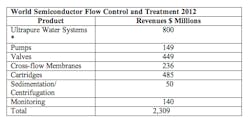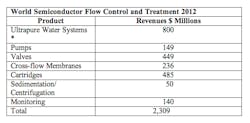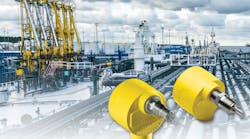The water used in semiconductor processing needs to be extremely pure. Water from a river or even water already processed in a municipal drinking water plant must be subjected to a series of steps, which often include granular media filters, cartridges, reverse osmosis, ion exchange and degasification. The water must be carefully monitored for a number of parameters. For example, dissolved oxygen must be measured and controlled at a few parts per billion.
The pumps and valves used in processing the ultrapure water are uniquely designed to minimize any contamination. This includes special materials of construction. The piping, tanks and other components of the ultrapure water system also have to be built to eliminate contamination.
One of the recent design changes is to reuse water where possible. Rinse water which was delivered to a tool but not used can undergo less stringent treatment than water that was used as incoming plant water.
The semiconductor industry is growing at rates faster than GDP thanks in part to photovoltaic production, as well as mobile communications, according to McIlvaine. Asia is the largest producer, and McIlvaine predicts it will continue to outpace other markets, China gains on Korea, Taiwan and Japan in the semicon space.
The demands for even more pure water are increasing as the line sizes on the chips are decreasing. This aspect, coupled with the opportunity for water reuse, are creating new opportunities, says McIlvaine.



